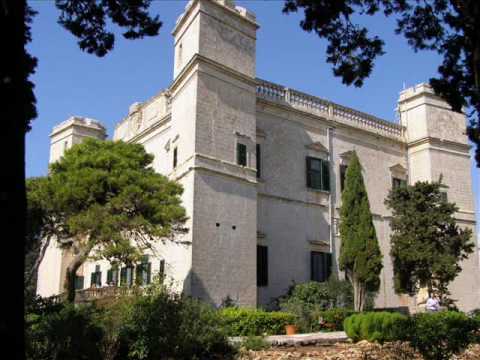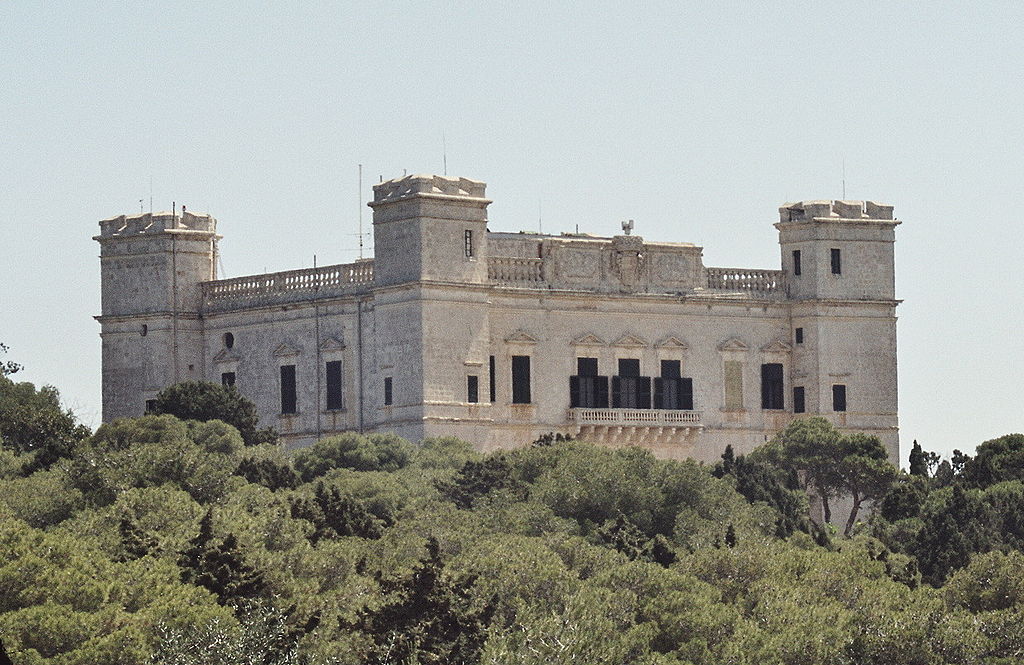Verdala Palace is a palace in the Buskett Gardens, limits of Siġġiewi, Malta. It was built in 1586 during the reign of Hugues Loubenx de Verdalle, and it now serves as the official summer residence of the President of Malta.
The site of Verdala Palace was originally occupied by a hunting lodge, which was built in the 1550s or 1560s during the reign of Grand Master Jean Parisot de Valette. The lodge was built in the Boschetto, a large semi-landscaped area that was used by knights of the Order of Saint John for game hunting. The hunting lodge was expanded into a palace in 1586, during the reign of Hugues Loubenx de Verdalle. It was further embellished in the 17th and 18th centuries, during the reigns of Giovanni Paolo Lascaris and António Manoel de Vilhena.
During the French blockade of 1798–1800, the palace served as a military prison for French soldiers captured by the Maltese or British. During British rule, it became a silk factory, but it was eventually abandoned and fell into a state of disrepair. Some repairs were undertaken during the governorship of Frederick Cavendish Ponsonby, and it was fully restored by Governor Sir William Reid in the 1850s. Prior to its restoration it was a temporal minor hospital between 1915 and 1916. It subsequently became the official summer residency of the Governors of Malta. On the outbreak of World War II in 1939, works of art from the National Museum were stored at the palace for safekeeping. The palace was restored in 1982 and began to be used to host visiting heads of state.
Since 1987, the Verdala Palace has been in use as the summer residence of the President of Malta, and it is generally closed to the public except for the August Moon Ball held annually in aid of the Malta Community Chest Fund.
Verdala Palace was designed by Girolamo Cassar, a Maltese architect mostly known for the design of many buildings in the capital Valletta. The palace is an example of Renaissance architecture, and its design is possibly influenced by Villa Farnese in Caprarola.
The building has a rectangular plan, with pentagonal bastion-like turrets on each corner. The building itself has two floors, while the corner turrets are about five storeys high. The entire structure is also surrounded by a stone quarried ditch. Although the turrets and ditch gave the palace the outward appearance of a fort, they were mainly symbolic, and the palace was never really intended to withstand any attack. Nonetheless, the palace was still armed with four pieces of artillery on the roof. The interior of the palace is very ornate, with frescoes on some of the ceilings.
A chapel, stables and servant quarters are located a short distance away from the palace.
The palace is visible from multiple towns in Malta such as Rabat, Siġġiewi, Mtarfa and Dingli.












